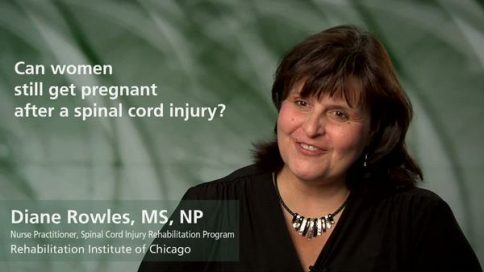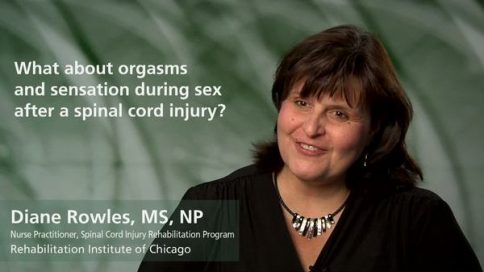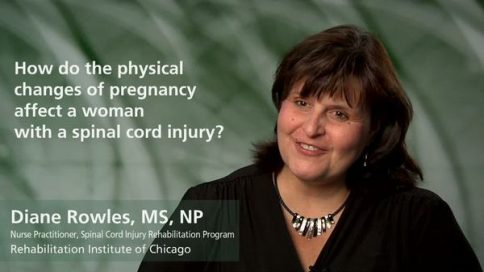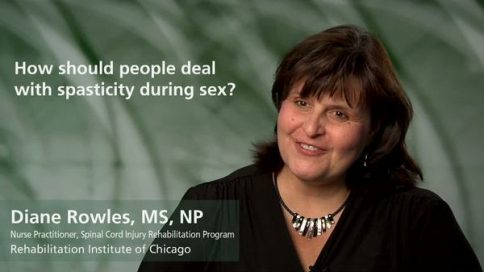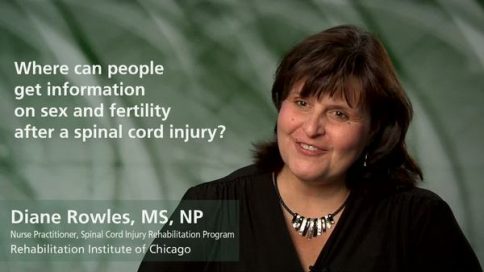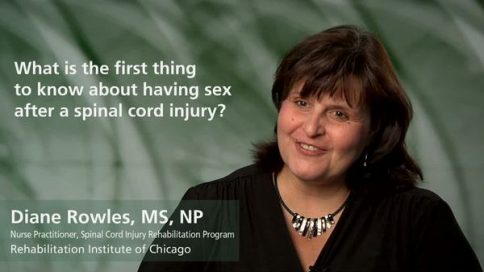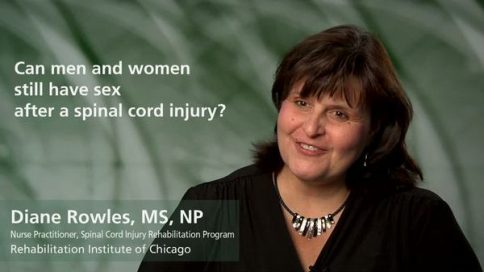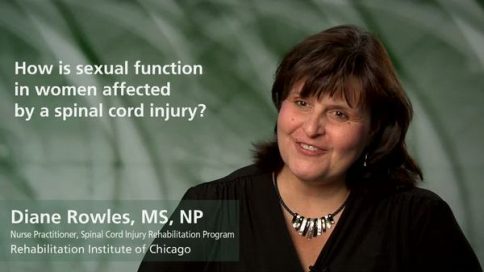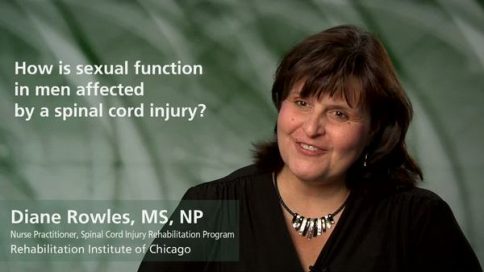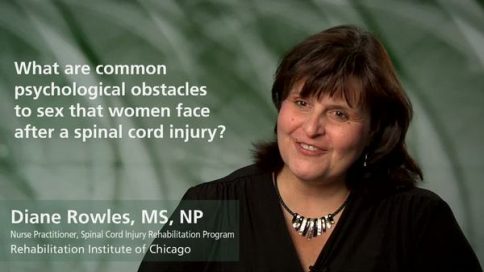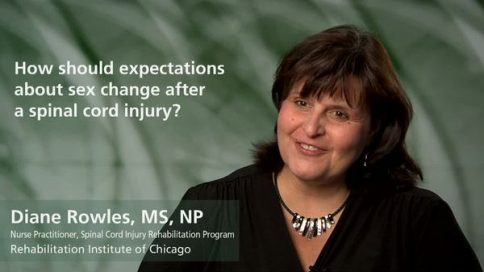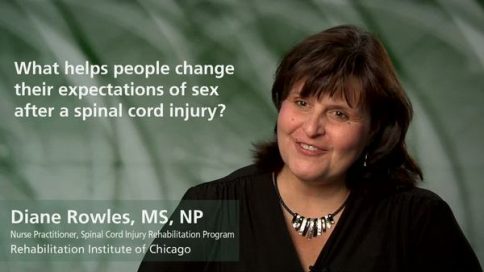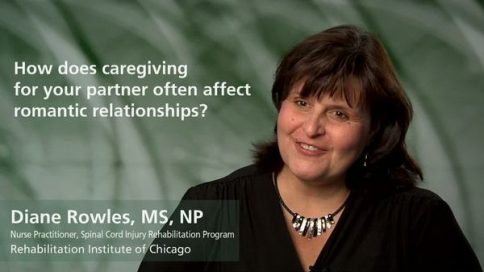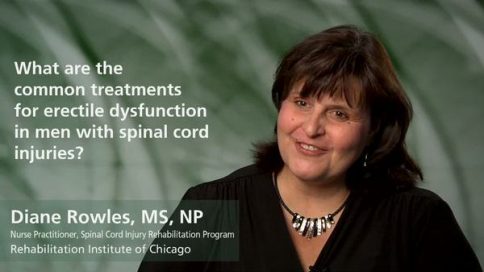What about orgasms and sensation during sex after a spinal cord injury? - Diane M. Rowles, MS, NP
|
|
What about orgasms and sensation during sex after a spinal cord injury? |
|
Diane M. Rowles, MS, NPNurse Practitioner, Spinal Cord Injury Rehabilitation Program, Rehabilitation Institute of Chicago |
||
| Read Bio | More Videos by Diane M. Rowles | |
|
Share |
||
Transcript
So, orgasm and sensation. If a person does not have genital sensation, then it's going to feel different than it did before. And though we can help men have babies, we can help with erections, we can help with ejaculation. For women, we can do the pregnancy thing, we can do all of that other. What we have to realize is that we cannot give sensation back. So, is it enjoyable? The vast majority of people with spinal cord injuries say that sex is very enjoyable. But they describe it, orgasm, as a psychological orgasm, rather than a genital orgasm. So, it's very important for them to communicate what feels good to them. And they may not know at the beginning, it may take some experimentation. Where on their body do they have sensation? What feels good? A lot of the erogenous zones above the level of injury are the face, the back of the neck, down the back of the shoulders, the nipple line, and that's where I said in the shower is very nice because it gives different sensation. So, it's going to be very important for people to communicate with their partner what feels good, what doesn't feel good. So, I encourage people to experiment on their body what touch feels good and what touch feels bad. There's also areas that people sometimes don't think of, and that's areas that are hypersensitive after their spinal cord injury. Some of those areas are the band-like sensation, especially people with paraplegia who lose sensation in their mid-thoracic area. A lot of times they have a band that goes all the way around their body, that's right between where they lose sensation and have sensation. And generally, that's a very uncomfortable area to touch, but with the right person and the right setting, it can be very erogenous. So, I advise people to have their partner touch there. And by touch, it doesn't have to be hands touch. It can be tongue touch, eyelids touch, toe touch, kissing, whatever touch feels good and is acceptable to both partners. Other areas—some scars are hypersensitive, some have decreased sensation. So experiment with what scars, particularly chest tube scars are usually hypersensitive. And again, like I said, the face, the neck. So what feels good?—what doesn't feel good?
Show Less|
|
||
add
What about orgasms and sensation during sex after a spinal cord injury? |
||
Diane M. Rowles, MS, NPNurse Practitioner, Spinal Cord Injury Rehabilitation Program, Rehabilitation Institute of Chicago |
More Videos by Diane M. Rowles | |
| Transcriptadd | share | |
So, orgasm and sensation. If a person does not have genital sensation, then it's going to feel different than it did before. And though we can help men have babies, we can help with erections, we can help with ejaculation. For women, we can do the pregnancy thing, we can do all of that other. What we have to realize is that we cannot give sensation back. So, is it enjoyable? The vast majority of people with spinal cord injuries say that sex is very enjoyable. But they describe it, orgasm, as a psychological orgasm, rather than a genital orgasm. So, it's very important for them to communicate what feels good to them. And they may not know at the beginning, it may take some experimentation. Where on their body do they have sensation? What feels good? A lot of the erogenous zones above the level of injury are the face, the back of the neck, down the back of the shoulders, the nipple line, and that's where I said in the shower is very nice because it gives different sensation. So, it's going to be very important for people to communicate with their partner what feels good, what doesn't feel good. So, I encourage people to experiment on their body what touch feels good and what touch feels bad. There's also areas that people sometimes don't think of, and that's areas that are hypersensitive after their spinal cord injury. Some of those areas are the band-like sensation, especially people with paraplegia who lose sensation in their mid-thoracic area. A lot of times they have a band that goes all the way around their body, that's right between where they lose sensation and have sensation. And generally, that's a very uncomfortable area to touch, but with the right person and the right setting, it can be very erogenous. So, I advise people to have their partner touch there. And by touch, it doesn't have to be hands touch. It can be tongue touch, eyelids touch, toe touch, kissing, whatever touch feels good and is acceptable to both partners. Other areas—some scars are hypersensitive, some have decreased sensation. So experiment with what scars, particularly chest tube scars are usually hypersensitive. And again, like I said, the face, the neck. So what feels good?—what doesn't feel good?


